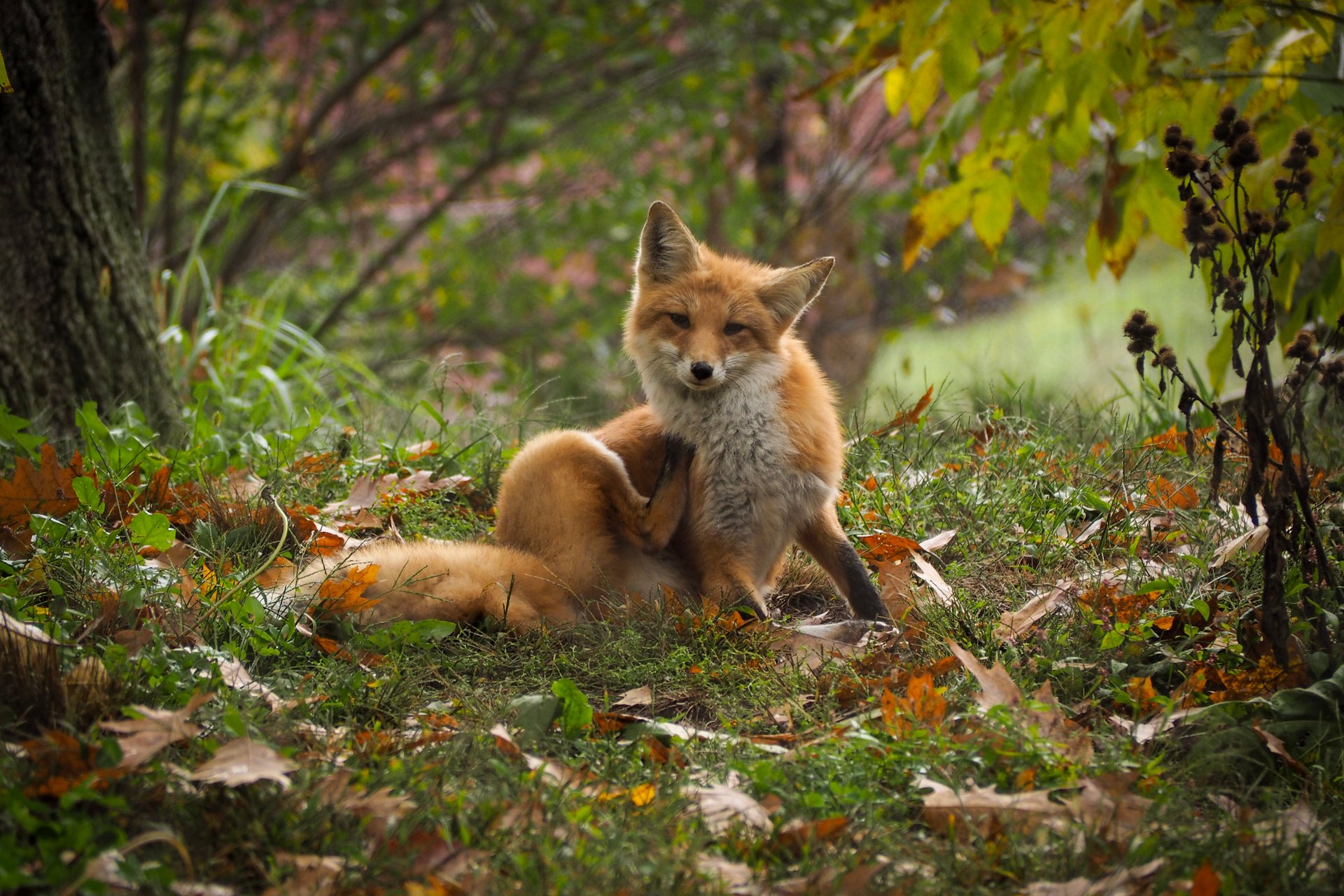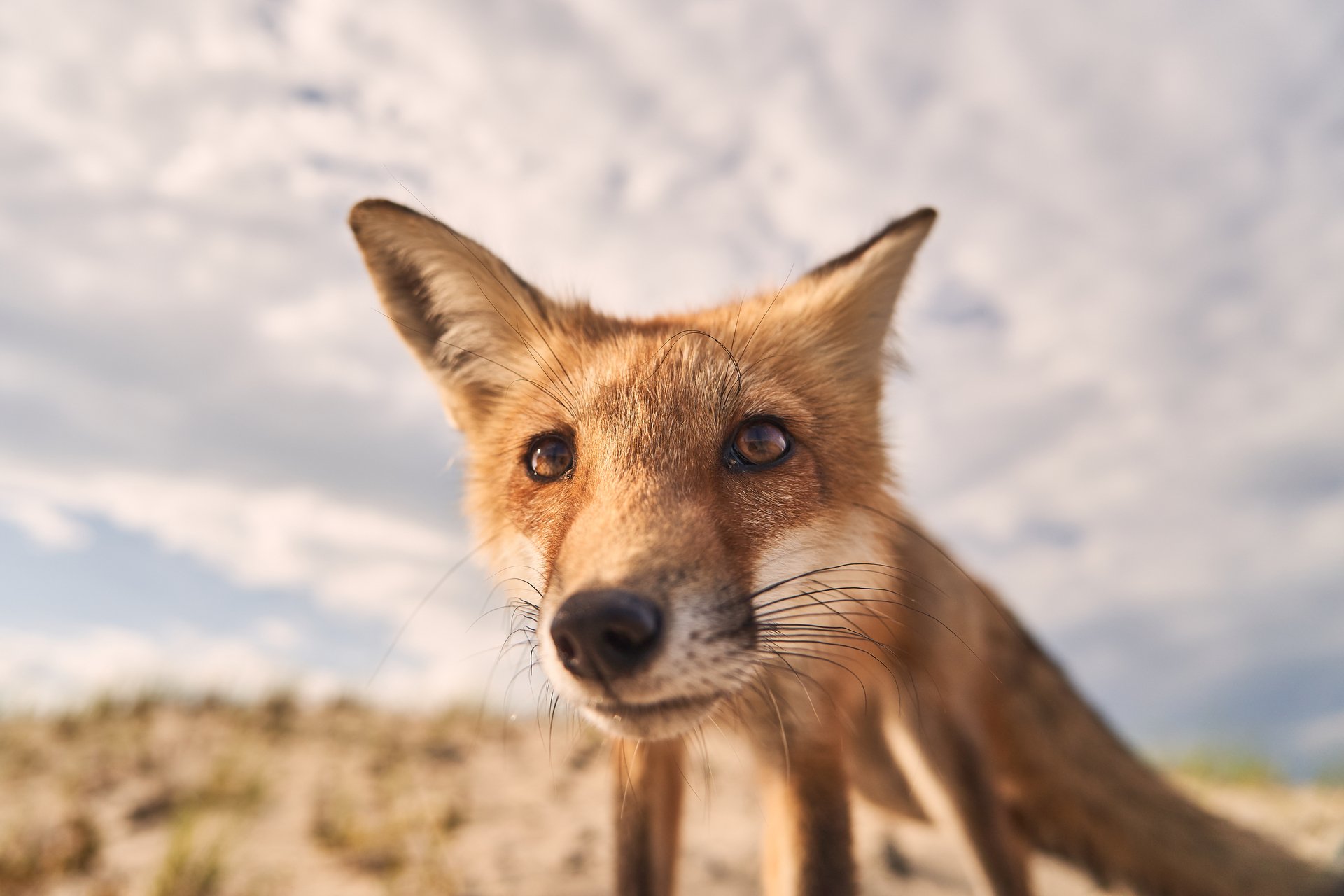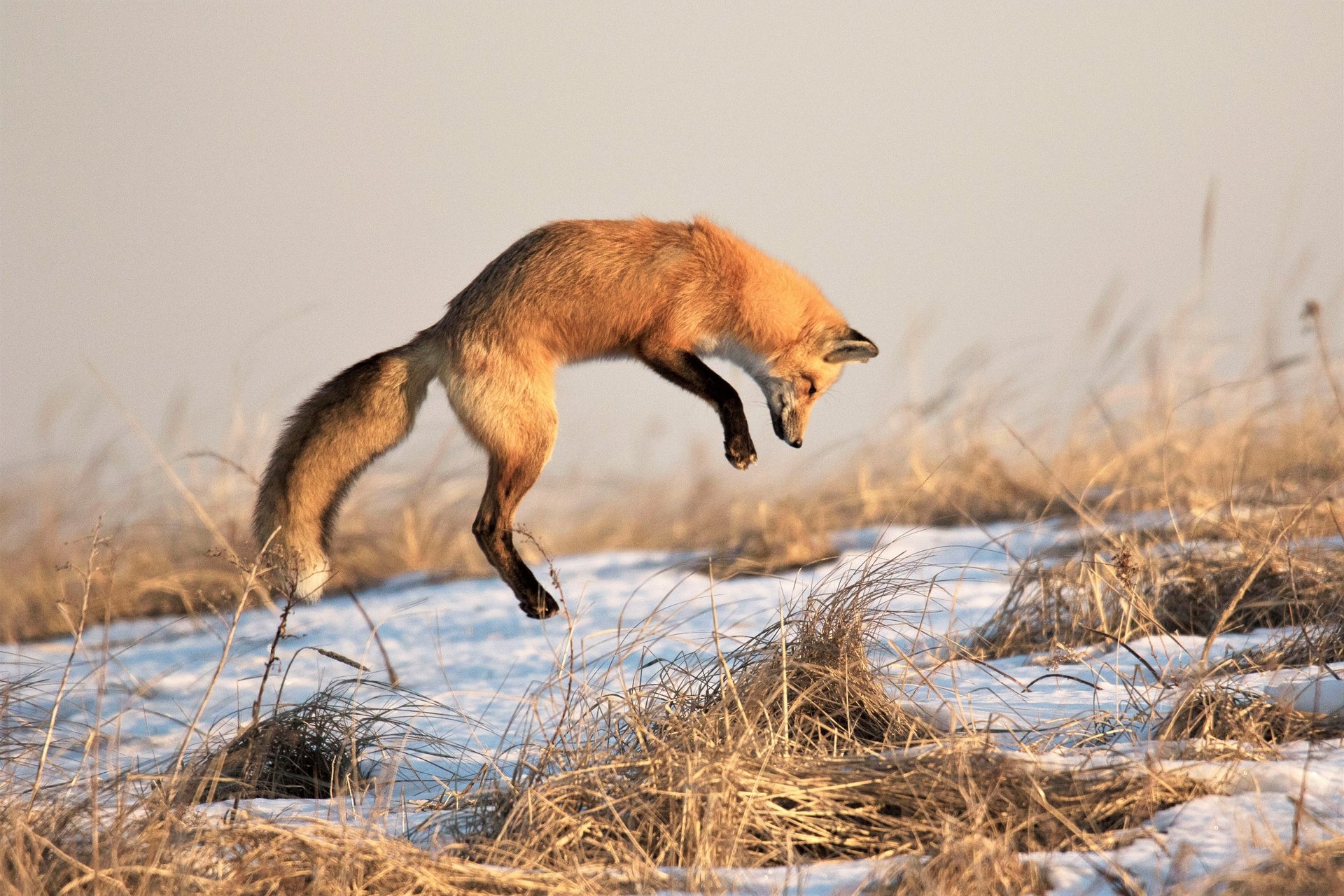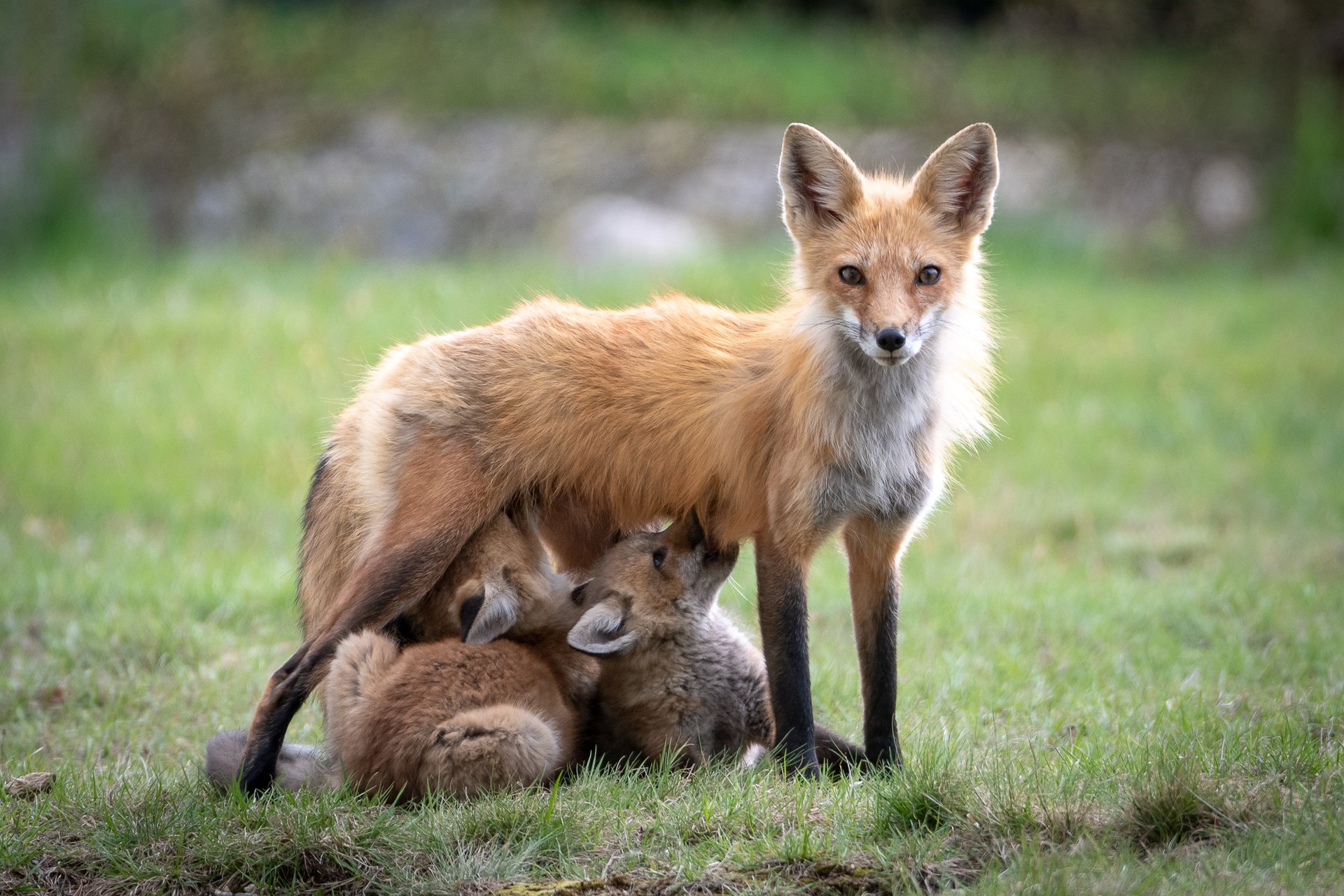Foxes
Foxes are members of the family Canidae, a word that comes from the Latin word for dog, “canis.” They are curious but tend to keep their distance from people and animals. When they are seen, it is usually adults hunting during the day while they are raising young. They are vocal and can be heard barking, howling, or whining, especially in the winter when they are breeding.
Types of Foxes
There are two species of fox in Massachusetts, the red fox (Vulpes vulpes) and the less common gray fox (Urocyon cinereoargenteus). Of the two species, the red fox is the one you’re most likely to see because they are adapted very well to any environment.
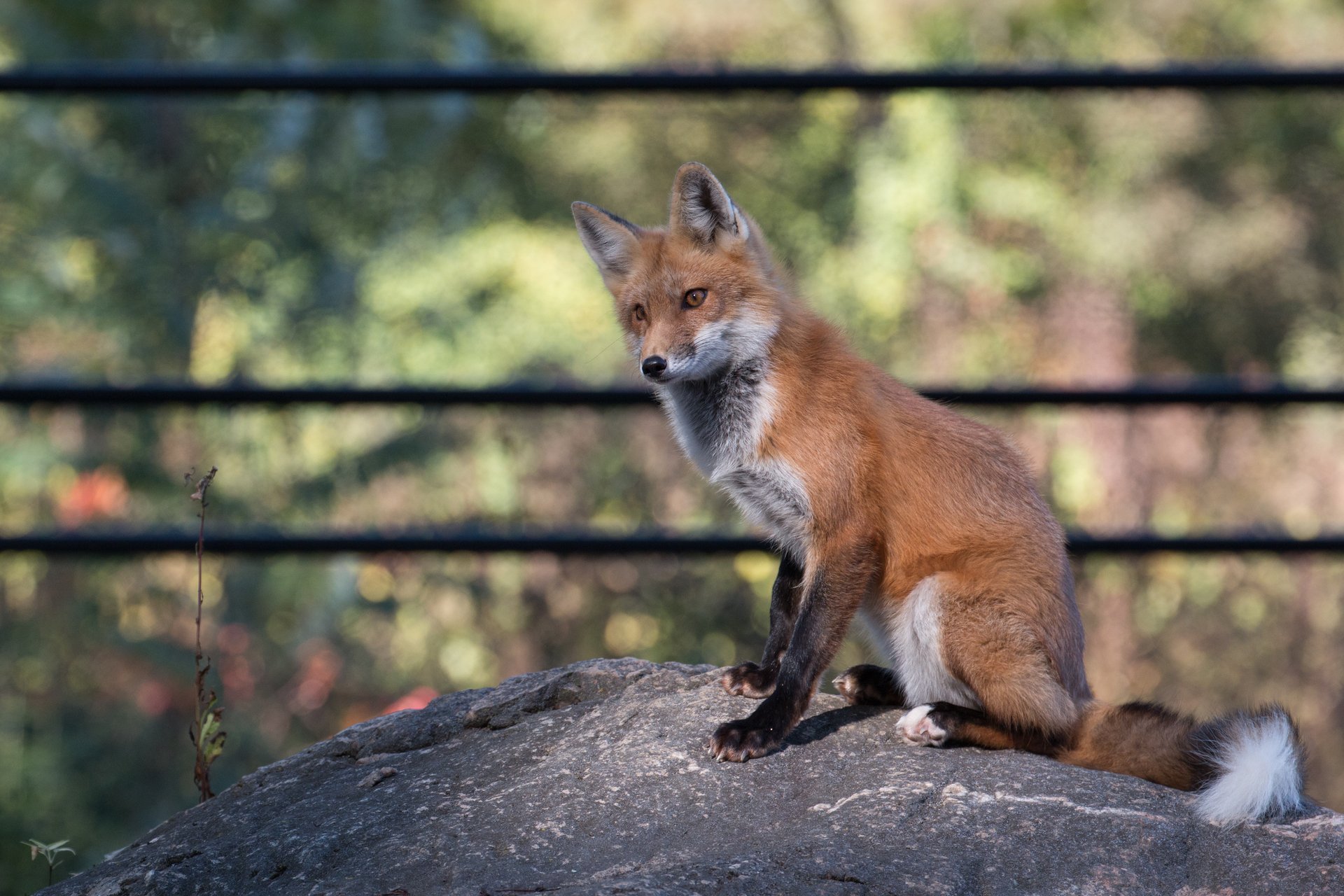
Red Fox
Red Foxes are 35-40 inches long, including their long fluffy tail. Coloration can vary, but they are typically recognized by their rusty red back and black ears and “stockings.” The white tip of the tail distinguishes them from coyotes and other animals.
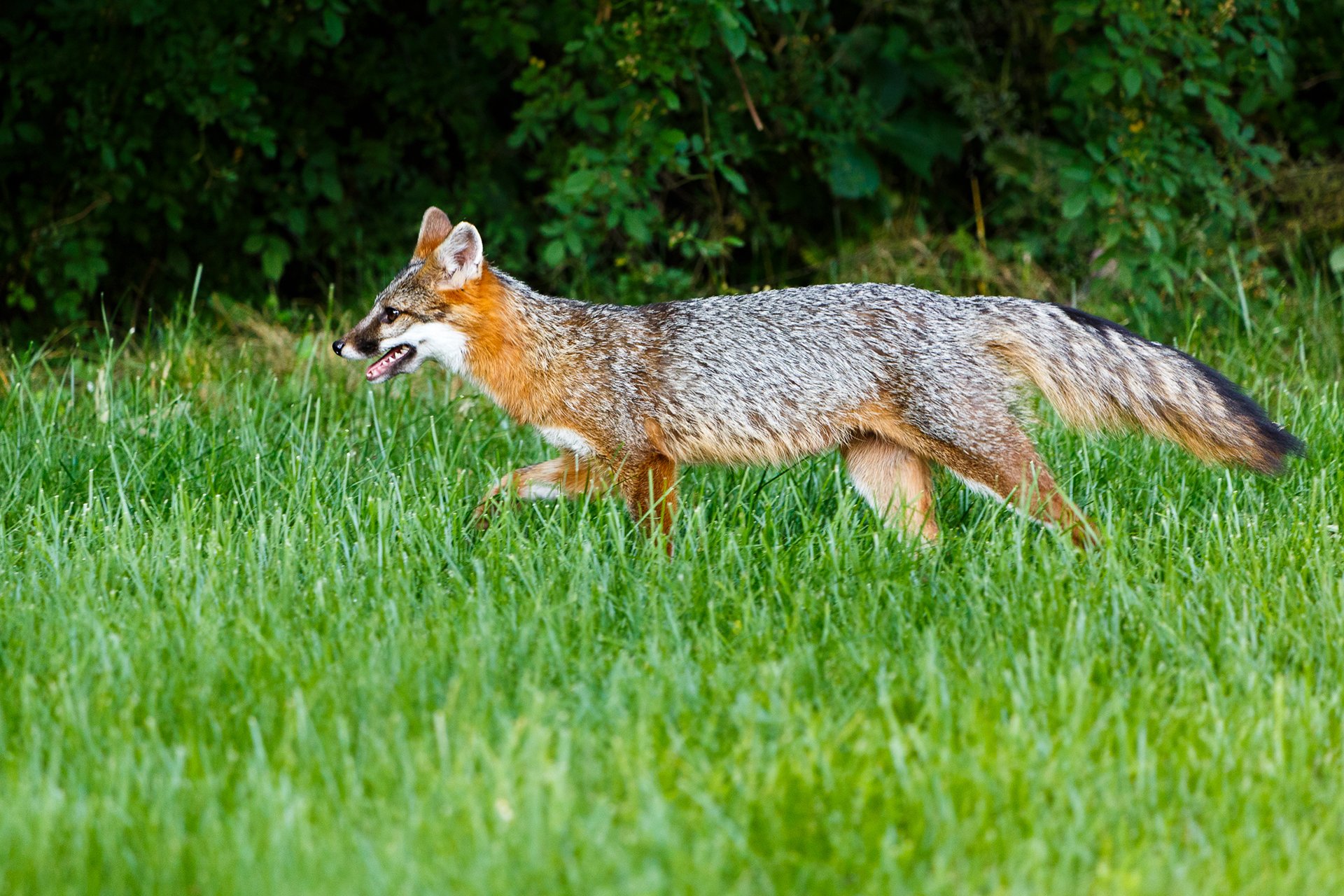
Gray Fox
Gray Foxes are slightly smaller than the Red Fox with a shorter muzzle and legs. Their sides are the same rusty color as the Red Fox, but a gray streak runs down the back starting from the head and ending at the tail. They lack black stockings, but they do have a black-tipped tail. Because of their smaller size, they are less adept in deep snow, which may partially account for their scarcity in the northeast. They also don’t wander as much and tend to stick to their forest territory.
One trait that separates Gray Foxes from their red cousins is their ability to retract their claws (similar to a cat). These hooked-shaped claws are why the Gray Fox is one of the two Canidae species in the world that can climb trees and jump from branch to branch. They climb trees to run from predators and to find food.
How to Tell a Fox from a Coyote
Most of us only ever catch fleeting glimpses of foxes or coyotes, and these brief encounters can leave us wondering what species we saw. Adult coyotes are more than double the size of Gray Foxes, and coyotes in the eastern U.S. tend to be bigger than those in the west.
Coyotes’ color varies greatly but is usually gray to cinnamon gray. They have a heavy build, long legs, and a relatively short, dark-tipped tail that hangs down when they run. Learn more about how to tell the difference
Fox Behaviors
Where do Foxes Live?
Red and Gray foxes can be found across Massachusetts, except on Martha’s Vineyard and Nantucket. While their habitats include a mixture of forests, fields, and thickets, foxes have adapted to human civilization over time and will even den in suburban backyards. While they will dig their own dens, foxes prefer to appropriate and enlarge the dens of other mammals such as woodchucks. It’s common for foxes to use crawl spaces under a shed or deck as dens. These dens can be extensive with several entrances.
What do Foxes Eat?
Both the red and grey foxes are omnivorous and are opportunistic feeders. Their primary foods are rabbits, squirrels, birds, small rodents, eggs, insects, fruit, vegetation, and dead animals. If foraging and hunting have been plentiful, foxes will cache (store) the excess food for later. Foxes have been observed digging up their cache, inspecting it, and reburying it in another spot.
Foxes are the only animal known to use the earth’s magnetic field for hunting. They use it to judge the distance and direction of their prey to make a more accurate pounce. When listening for prey underground, the fox waits until the angle of the sound matches the slope of the earth’s magnetic field telling the fox the distance it is away from its prey. The fox then knows exactly how far to pounce to land upon it.
When Do Foxes Breed?
Breeding occurs from mid-January through February, with a gestation period of 7-8 weeks. After breeding, female foxes will seek dens in which to give birth. Foxes typically produce 3-6 pups and both parents assist in raising the young. The young are blind and helpless at birth and remain in the den until 4-5 weeks old. They are eventually weaned at around 12 weeks. By mid-summer, the pups venture further away from the den to catch their own meals and only return to sleep.
Territories range from 2-7 miles, often shared by mating pairs and pups, and will be defended from wandering outside foxes. Foxes often mark their territory with a distinct skunk-like smell. If you suspect you are in a habitat with foxes, look for tracks that form a straight line, as their back paws perfectly fall into the imprints made by the front paws.
Are Foxes Dangerous?
A fox den in the backyard presents little danger to the homeowners: foxes would rather avoid people than confront them. Watching the young as they play and develop the skills they will need as an adult can be a joy to both adults and children.
If you absolutely must eject foxes from an area, it's best to wait until any young are old enough to follow the parents. Mild harassment such as loud noises (yelling, banging pots, and pans) can work. Another strategy that has brought some success is to use a motion sensor to activate sprinklers.
Never feed a fox and try not to leave exposed garbage out overnight. Compost piles should be in a secure container.
Threats to Foxes
Foxes are an important part of a healthy, thriving ecosystems. Predators of foxes include coyotes and bobcats. They can also be injured or killed by vehicles. Like other mammals, foxes can be infected with rabies.
How Mass Audubon Helps Foxes
Foxes are crucial to maintaining and balancing a healthy ecosystem. Mass Audubon is helping foxes by protecting their habitats and building resilient landscapes where they can thrive. You can help us conserve and protect foxes by becoming a member today.



